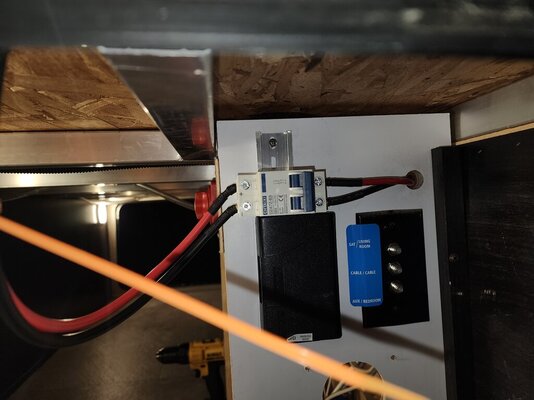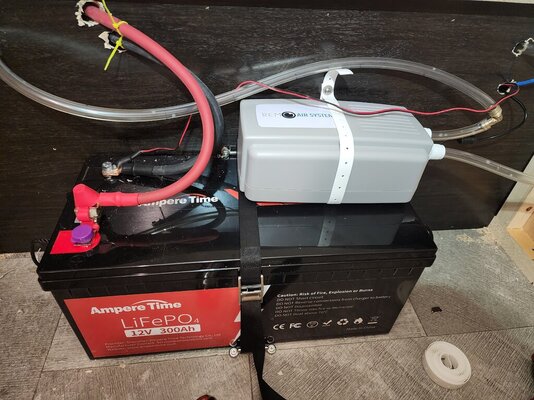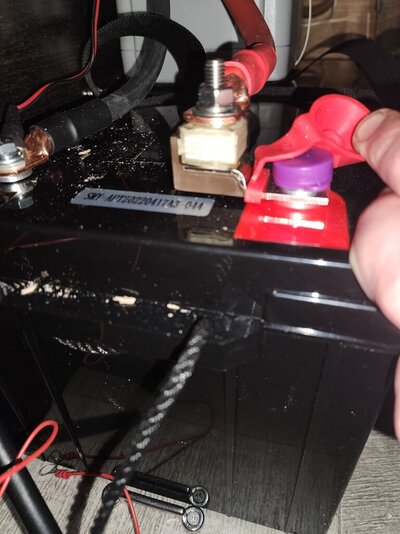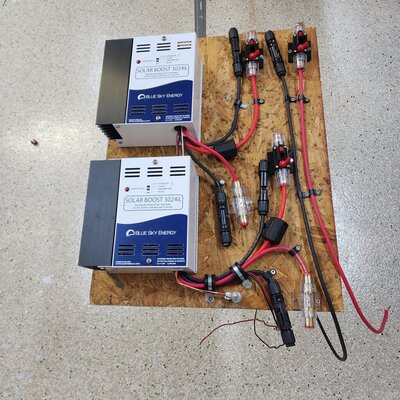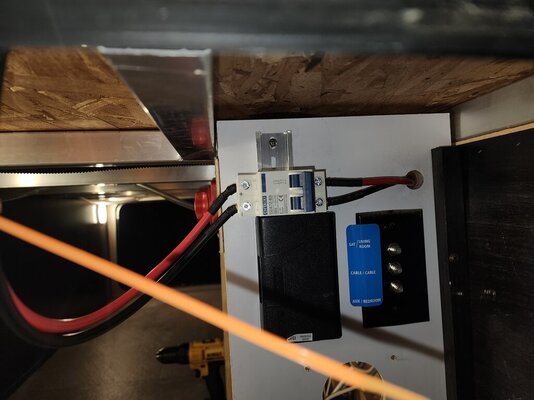chaostactics
Well-known member
Still on to do list:
1. Run ground from MPPT to Multiplus ground.
2. Mount MPPT to wall.
3. Enclose solar breaker/disconnect in breaker box.
4. Bolt Multiplus ground to frame.
5. Put back on all covers
6. Attach smart shunt wire to + batt terminal.
7. Mark red AC out wire green.
8. Put 30 amp breaker between shore power and Multiplus
9. Get better caps for battery terminals (can anyone recommend where I can find some.
Notes: MPPT is set to 7 on the dial for Lifepo batteries thank you for the reminder @solarman
All wire is multi strand wire, all wire ends either have lugs or ferrules, none of the wires are pulled taught all wires have play in them.
There is a 300A MRBF fuse on the + battery terminal. I am carrying spares of all fuses and an extra pair of 80A fuses Incase the 60A fuse is not good enough for the 800W of solar in parallel.
All wire is 2/0 or 6 awg with the exception of the wires going into the MPPT from the panels which is 10 AWG factory wire.
Solar disconnect/breaker is 1000V / 63A
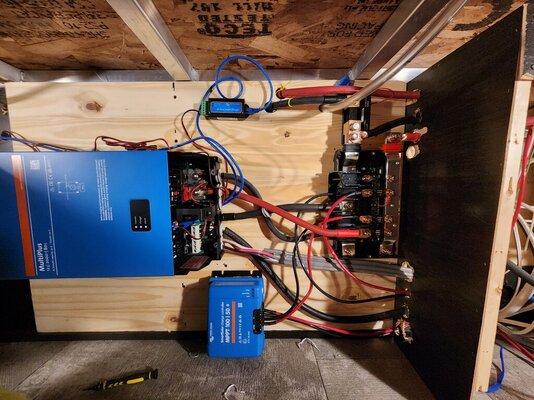
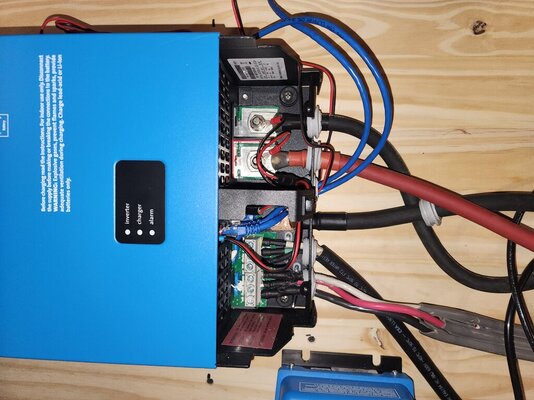
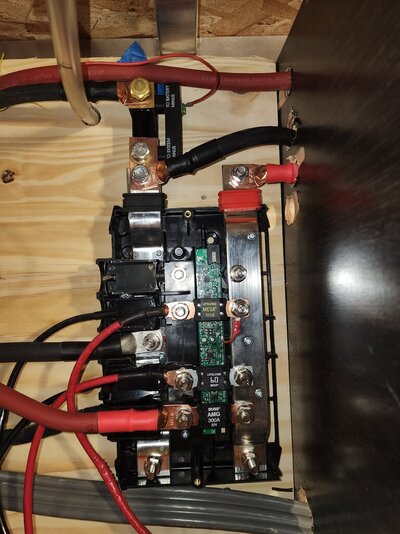
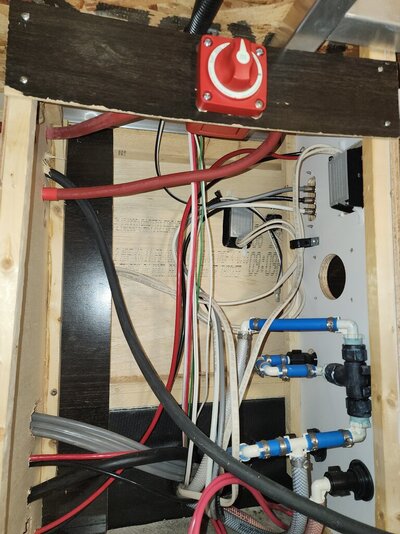
1. Run ground from MPPT to Multiplus ground.
2. Mount MPPT to wall.
3. Enclose solar breaker/disconnect in breaker box.
4. Bolt Multiplus ground to frame.
5. Put back on all covers
6. Attach smart shunt wire to + batt terminal.
7. Mark red AC out wire green.
8. Put 30 amp breaker between shore power and Multiplus
9. Get better caps for battery terminals (can anyone recommend where I can find some.
Notes: MPPT is set to 7 on the dial for Lifepo batteries thank you for the reminder @solarman
All wire is multi strand wire, all wire ends either have lugs or ferrules, none of the wires are pulled taught all wires have play in them.
There is a 300A MRBF fuse on the + battery terminal. I am carrying spares of all fuses and an extra pair of 80A fuses Incase the 60A fuse is not good enough for the 800W of solar in parallel.
All wire is 2/0 or 6 awg with the exception of the wires going into the MPPT from the panels which is 10 AWG factory wire.
Solar disconnect/breaker is 1000V / 63A





